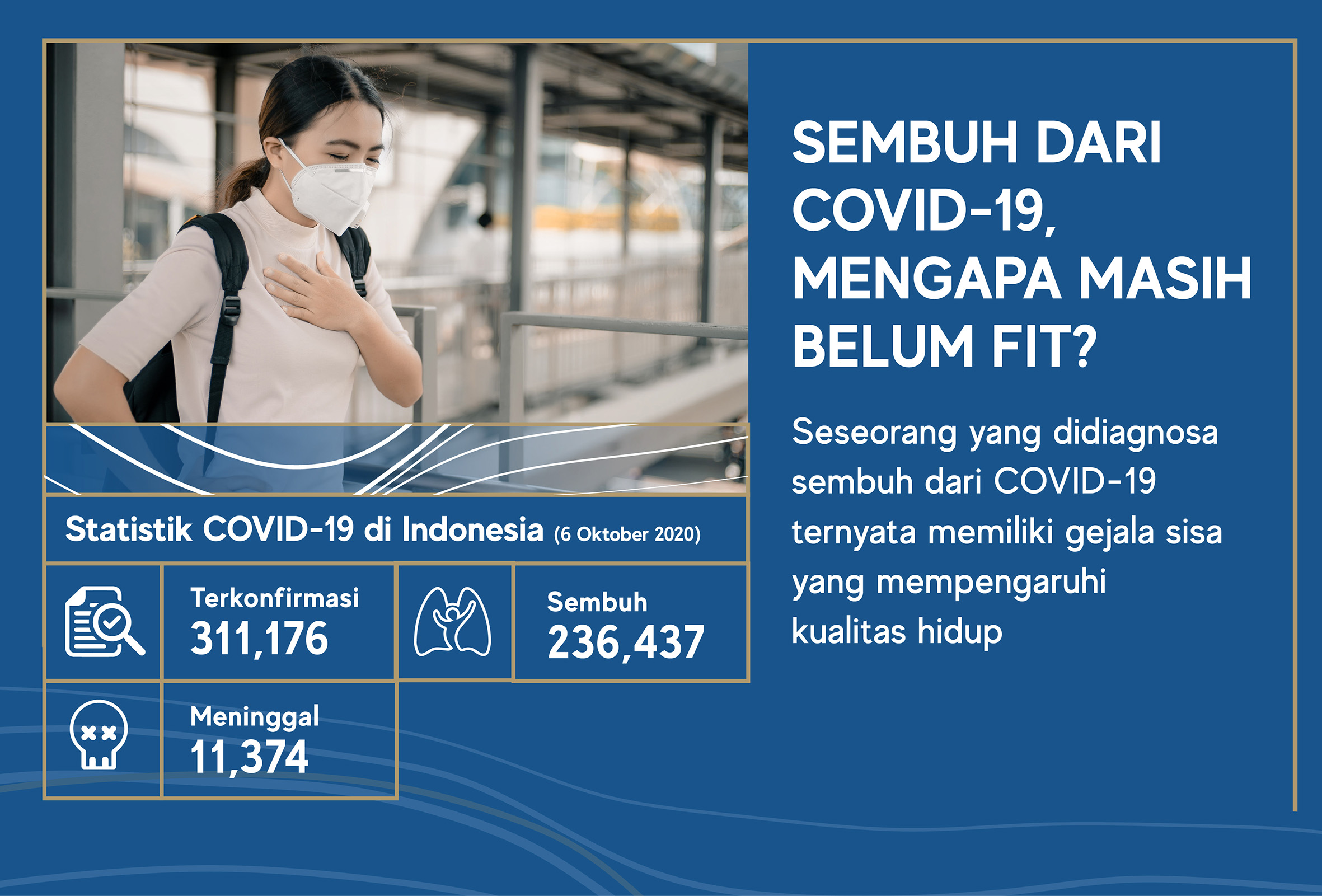COVID-19 is an infectious disease caused by the SARS-CoV-2 virus, with symptoms such as fever, cough and shortness of breath, which resemble acute respiratory infections. Since evidence of its spread was found in Indonesia, COVID-19 cases have continued to increase quite rapidly. kawalcovid19 reported that as of September 16, 2020 there were 225,030 positive cases of COVID-19 with a total of 161,065 cases of recovery.
What criteria determines that I’ve been “cured” from COVID-19?
According to the August 2020, 2nd edition of the COVID-19 Management Guidelines, a person who is confirmed to be infected with COVID-19 (with mild-moderate-severe symptoms or without symptoms) is declared “cured” if he or she has met the isolation criteria and is given a statement of completion of monitoring based on an assessment by the doctor in charge.
However, in someone who is confirmed to have been infected by COVID-19, there is a possibility that the results of the follow-up RT-PCR will be positive again. Consequently, the determination of “cured” cases is made based on assessments by the doctor in charge, and can change at any time during the pandemic.
So, am I really “cured”?
Several studies around the world states that persons diagnosed with COVID-19 could suffer from long-term sequelae or aftereffects that might affect their quality of life. This condition is commonly known as Post-COVID-19 Syndrome.
What is Post-COVID-19 Syndrome?
Post-COVID-19 Syndrome is a condition characterized by residual symptoms that appear in a person who has been declared cured of a COVID-19 infection. This condition occurs due to organ damage caused by the SARS-CoV-2 virus. Data from several studies show that the greatest impact of COVID-19 infection occurs in the lungs. The same thing has also been reported in previous coronavirus infections, namely SARS and MERS, which have been known to persist for up to 7 years.
What is New-Illness Related Fatigue?
In COVID-19 infections, the SARS-CoV-2 virus that enters the body will cause immunological reactions and interfere with many cell functions in the body, especially the lungs. Changes in the shape of cells in the lungs will cause the oxygen exchange function to be disrupted. Generally speaking, lung changes found post-COVID-19 infection will fall into the category of restrictive lung disorders. These pulmonary changes will affect the respiratory process and cause someone who has been infected with COVID-19 to tire more easily. This is commonly known as new-illness related fatigue. A study in hospitals in Europe found that new-illness related fatigue can occur in patients of a very wide age range, from 20 to 84 years old.
What should I do if I have Post-COVID-19 Syndrome?
Rehabilitation is an aggregation of medical efforts to return the body’s condition back to its pre-disease state, corresponding to the patient’s ability. One of these efforts is physical exercise, which aims to maintain or improve current organ function. Physical exercise is highly recommended as a way to maintain or restore the patient’s quality of life back to the way it was before being infected with COVID-19, while adjusting to changes in the anatomical structure that occurred due to the infection.
References

